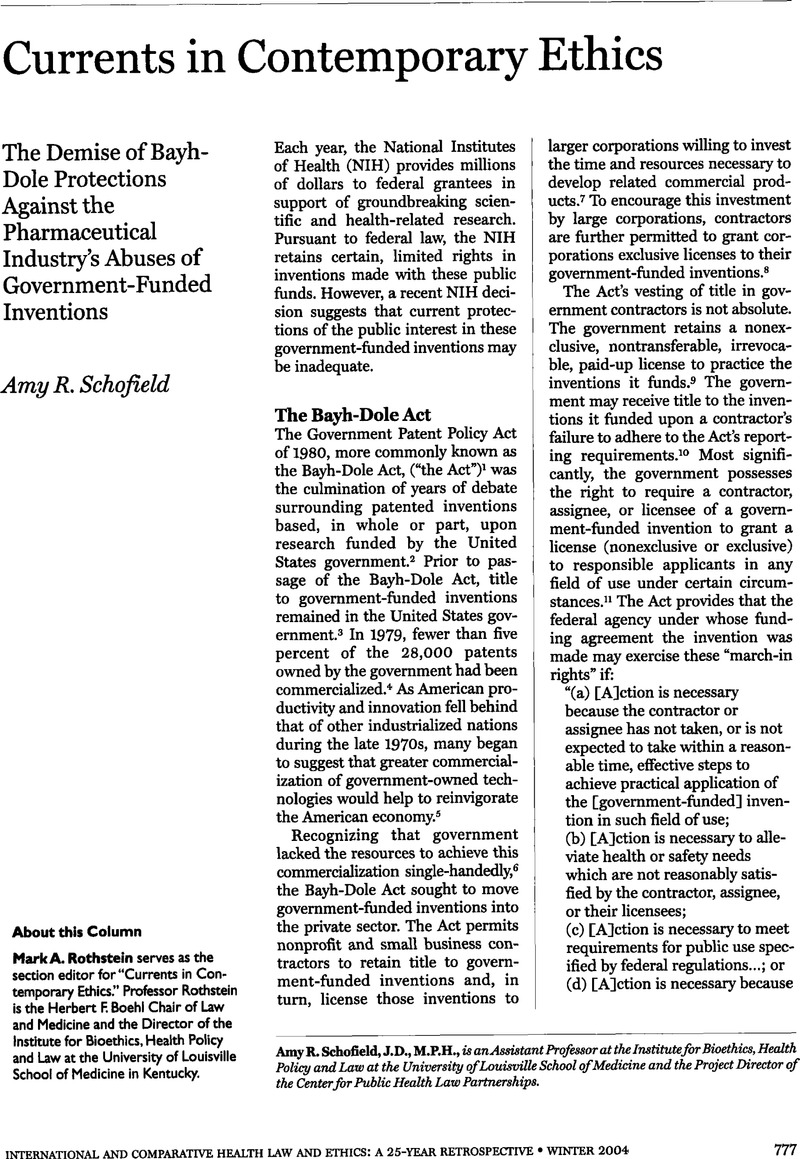Analysis of the legislative history of the Bayh-Dole Act is complicated by the numerous hearings and proposed bills on the topic of government-funded inventions throughout the late 1970s and early 1980s.
See supra note 2. The Bayh-Dole Act itself is derived from S. 414, “The University and Small Business Patent Procedures Act,” which passed the Senate in April 1980 and was referred to the House, where it apparently died in subcommittee. In November 1980, the House referred H.R. 6933, entitled “Government Patent Policy Act of 1980,” to the Senate, which approved an amendment substituting the nearly verbatim text of S. 414.
See 126
Congressional Record (
Washington, D.C.:
U.S. Government Printing Office,
1980): at 30,360 (amendment offered by Sen. Dole); 126 Congressional Record (Washington, D.C.: U.S. Government Printing Office, 1980): at 30,364 (statement of Sen. Bayh). The discussion contained herein is, therefore, limited to the Senate hearings, reports, and floor debates on S. 414, which opponents of the NORVIR petition claim to be the “only legislative history with any bearing” on the Bayh-Dole Act.
See Letter from J. P. Allen, President, National Technology Transfer Center and Author,
S. Rep. No. 96-480, to
Rohrbaugh, M., Director of the Office of Technology Transfer, Office of Intramural Research, National Institutes of Health 1 (Mar. 31, 2004) (available at <
http://ott.od.nih.gov/Meeting/Joseph-P-Allen.pdf> (last visited October 29,
2004);
Bayh Statement, supra note 43, at 3.
Google Scholar




